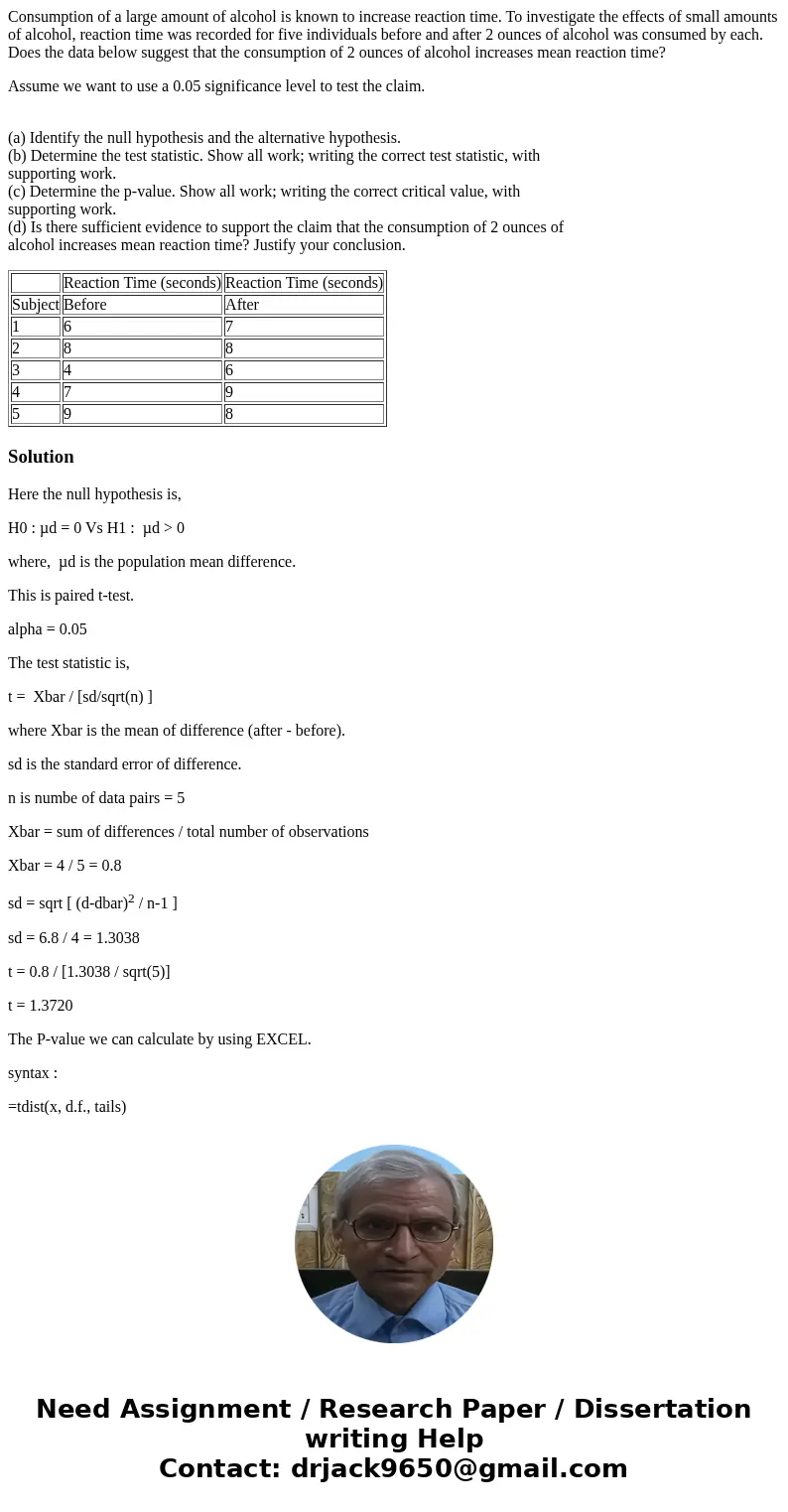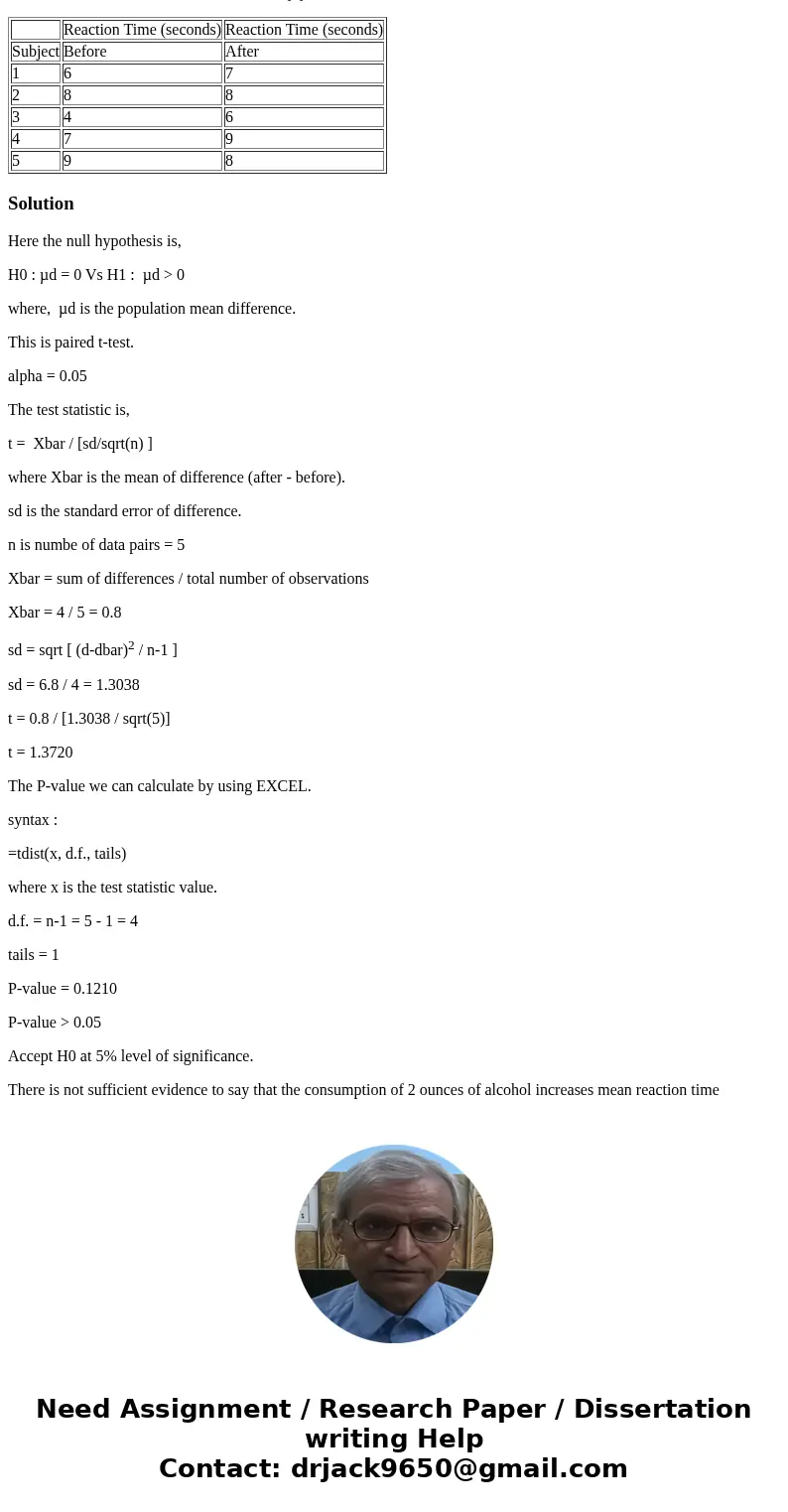Consumption of a large amount of alcohol is known to increas
Consumption of a large amount of alcohol is known to increase reaction time. To investigate the effects of small amounts of alcohol, reaction time was recorded for five individuals before and after 2 ounces of alcohol was consumed by each. Does the data below suggest that the consumption of 2 ounces of alcohol increases mean reaction time?
Assume we want to use a 0.05 significance level to test the claim.
(a) Identify the null hypothesis and the alternative hypothesis.
(b) Determine the test statistic. Show all work; writing the correct test statistic, with
supporting work.
(c) Determine the p-value. Show all work; writing the correct critical value, with
supporting work.
(d) Is there sufficient evidence to support the claim that the consumption of 2 ounces of
alcohol increases mean reaction time? Justify your conclusion.
| Reaction Time (seconds) | Reaction Time (seconds) | |
| Subject | Before | After |
| 1 | 6 | 7 |
| 2 | 8 | 8 |
| 3 | 4 | 6 |
| 4 | 7 | 9 |
| 5 | 9 | 8 |
Solution
Here the null hypothesis is,
H0 : µd = 0 Vs H1 : µd > 0
where, µd is the population mean difference.
This is paired t-test.
alpha = 0.05
The test statistic is,
t = Xbar / [sd/sqrt(n) ]
where Xbar is the mean of difference (after - before).
sd is the standard error of difference.
n is numbe of data pairs = 5
Xbar = sum of differences / total number of observations
Xbar = 4 / 5 = 0.8
sd = sqrt [ (d-dbar)2 / n-1 ]
sd = 6.8 / 4 = 1.3038
t = 0.8 / [1.3038 / sqrt(5)]
t = 1.3720
The P-value we can calculate by using EXCEL.
syntax :
=tdist(x, d.f., tails)
where x is the test statistic value.
d.f. = n-1 = 5 - 1 = 4
tails = 1
P-value = 0.1210
P-value > 0.05
Accept H0 at 5% level of significance.
There is not sufficient evidence to say that the consumption of 2 ounces of alcohol increases mean reaction time


 Homework Sourse
Homework Sourse